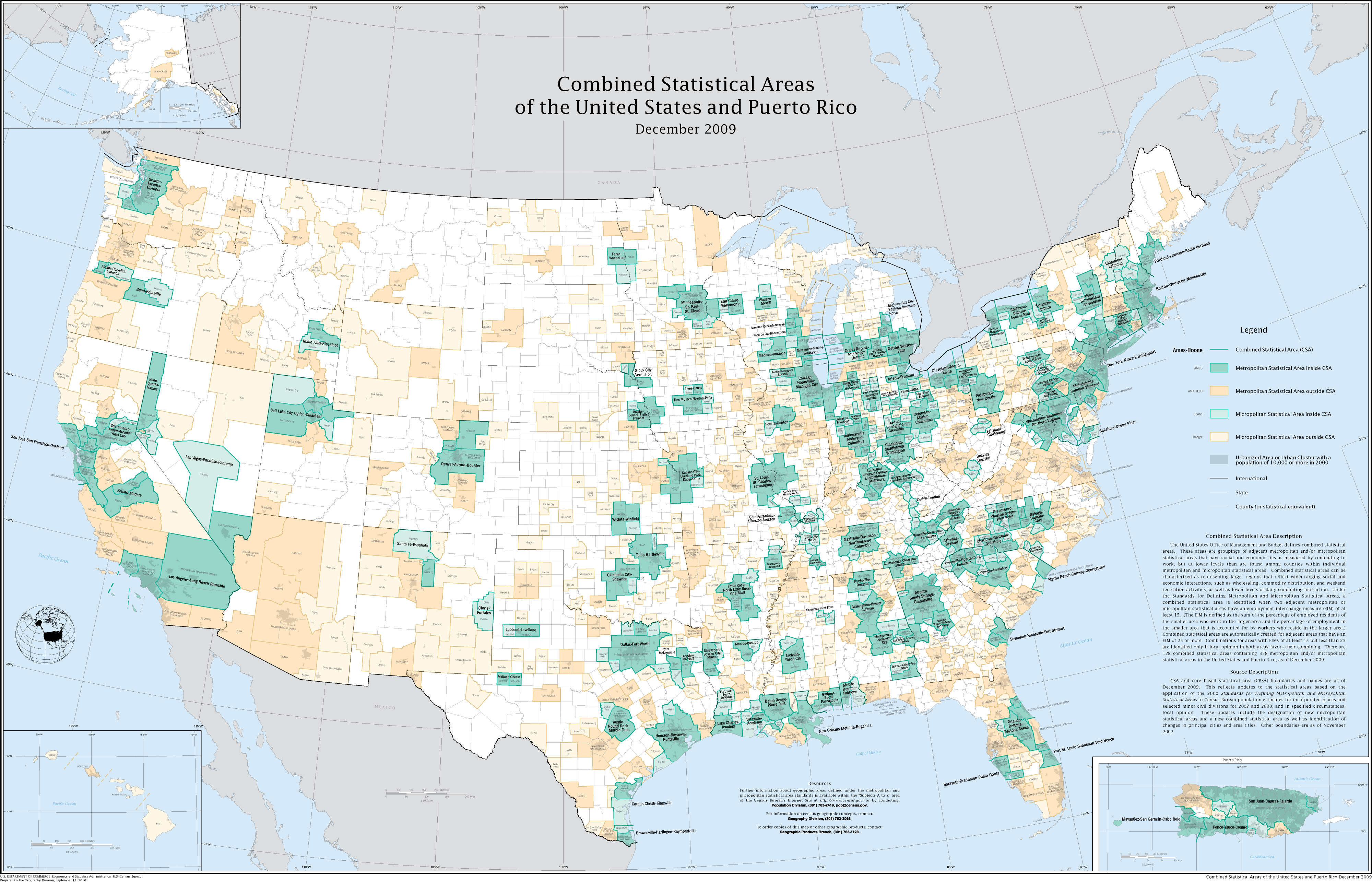The R package noncensus provides a collection of various regional information
determined by the U.S. Census Bureau along with demographic data.
You can install the latest package version by typing the following at the R console:
library(devtools)
install_github('ramhiser/noncensus')
Once you have installed and loaded the noncensus package, you can load a data
set with the data command. For instance, U.S. states in the region
denoted West can be viewed as such:
data(states)
subset(states, region == "West")
state name region division capital area population
1 AK Alaska West Pacific Juneau 589757 4779736
4 AZ Arizona West Mountain Phoenix 113909 2915918
5 CA California West Pacific Sacramento 158693 37253956
6 CO Colorado West Mountain Denver 104247 5029196
12 HI Hawaii West Pacific Honolulu 6450 1360301
14 ID Idaho West Mountain Boise 83557 12830632
27 MT Montana West Mountain Helena 147138 989415
33 NM New Mexico West Mountain Santa Fe 121666 19378102
34 NV Nevada West Mountain Carson City 110540 9535483
38 OR Oregon West Pacific Salem 96981 3831074
45 UT Utah West Mountain Salt Lake City 84916 2763885
48 WA Washington West Pacific Olympia 68192 6724540
51 WY Wyoming West Mountain Cheyenne 97914 563626
We also provide data for all U.S. counties, which are uniquely identified by
FIPS county codes. The
counties data set contains all of the U.S. counties and county equivalents
along with Combined Statistical Area
(CSA) and Core-Based
Statistical Area
(CSBA).
data(counties)
head(counties)
county_name state state_fips county_fips fips_class CSA CBSA population
1 Autauga County AL 01 001 H1 <NA> 33860 54571
2 Baldwin County AL 01 003 H1 380 19300 182265
3 Barbour County AL 01 005 H1 <NA> <NA> 27457
4 Bibb County AL 01 007 H1 142 13820 22915
5 Blount County AL 01 009 H1 142 13820 57322
6 Bullock County AL 01 011 H1 <NA> <NA> 10914
Details about the data stored in counties can be obtained via ?counties,
including details regarding CSA and CBSA. The following image from
Wikipedia
summarizes the statistical areas well:
It is sometimes useful to map FIPS codes at the county level to the more
granular zip codes. However, these data are seldom available and are tedious to
come by. We provide such a mapping in zip_codes:
data(zip_codes)
head(zip_codes, 10)
zip city state latitude longitude fips
1 00210 Portsmouth NH 43.0059 -71.0132 33015
2 00211 Portsmouth NH 43.0059 -71.0132 33015
3 00212 Portsmouth NH 43.0059 -71.0132 33015
4 00213 Portsmouth NH 43.0059 -71.0132 33015
5 00214 Portsmouth NH 43.0059 -71.0132 33015
6 00215 Portsmouth NH 43.0059 -71.0132 33015
7 03040 East Candia NH 43.0059 -71.0132 33015
8 03041 East Derry NH 43.0059 -71.0132 33015
9 03073 North Salem NH 43.0059 -71.0132 33015
10 03802 Portsmouth NH 43.0059 -71.0132 33015

